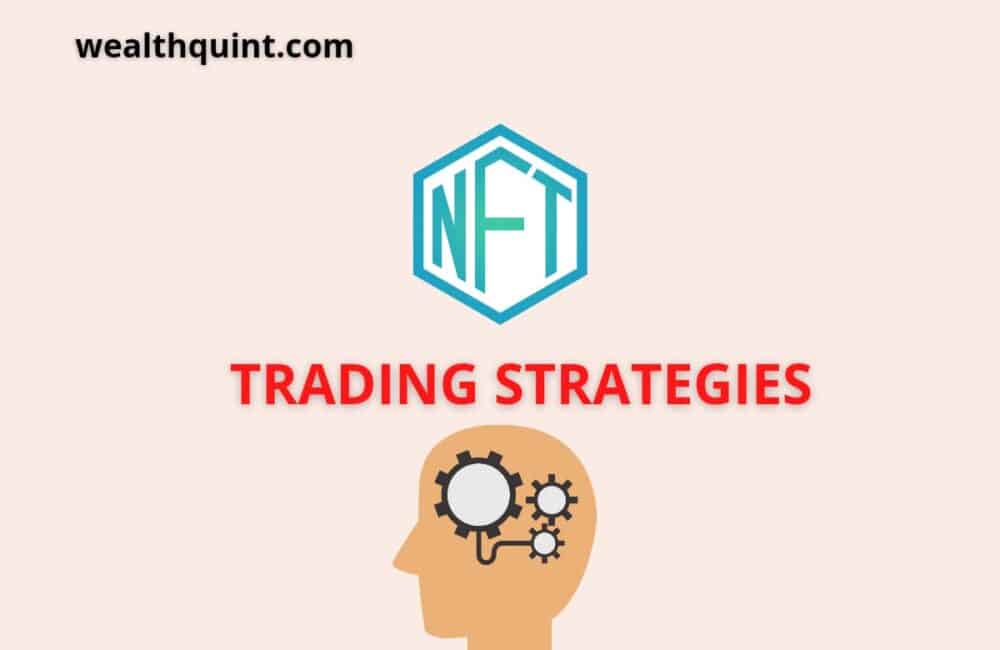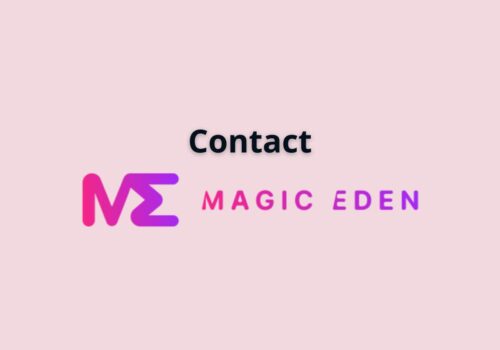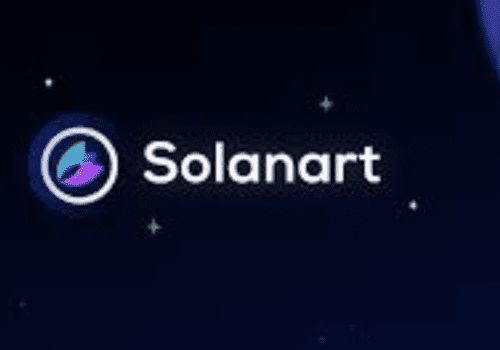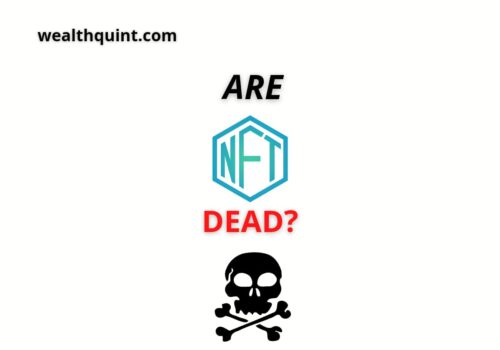Many people are talking about non-fungible tokens right now in the digital arena. Everyone has heard of NFTs and is eager to put them to the test and see what all the fuss is about.
This resulted in a change in the way people trade in the internet world. NFT ownership is now a trendy and well-regarded procedure in the community; not only is it popular and well-regarded, but it also represents an excellent chance for individuals to invest in and view NFTs as investments.
The whole structure of NFT investment methods is described in this blog, and a comprehensive NFT investing guide is provided.
The market for non-fungible tokens appears to be on everyone’s mind right now, and for a good reason. NFTs exist in various shapes and sizes, and they present lucrative prospects for both collectors and inventors.
Some of you may be questioning how profitable NFT trading may genuinely be, especially given that gif of a pop-tart cat from ten years ago is still worth remembering.
Approximately $70 million was spent. That was the price paid for a piece of Beeple digital art in the early months of 2021.
You should read the rest of the article to find out everything you need to know about NFTs, how they function, and how to get started with NFT trading.
What To Look For Before Investing In NFTs?
The process of buying and selling NFTs is simple. However, to make this trade profitable, one must take some time to research future NFT projects.
It might already be too late to invest in an NFT project by the time you see it trending on Twitter since prices might have already skyrocketed.
You will have a better chance of finding an NFT project if you spend more time learning about the project.
Let’s take a closer look at the fundamentals of the NFT project research by discussing:
1. Market Capitalization
If you’re considering a new NFT investment, you need to check the market capitalization. Many NFT tools can give you just the right data to aid in making the right decision.
According to the market cap definition, it is calculated by multiplying the total number of holders by the average price of one NFT from that collection.
2. Utility Of The NFT
The importance of NFTs is that they can connect the digital and physical worlds. So, for example, they can be used in games as assets to bridge these two worlds.
In the end, any digital asset must be useful. The lack of usefulness will prevent it from being in demand. However, depending on popularity and other factors, a useful asset may become more valuable over time.
3. NFT Scarcity
Although NFTs are all unique items, they are collected in NFT collections that differ in their attributes. For example, there may be many items in a collection of different items, but the rarer ones are more valuable.
Therefore, such items tend to be more expensive than the other items. Those rare NFTs that become popular are more likely to sell fast and at higher prices.
As a result, many investors use the rarity tool to determine how rare a given NFT is.
4. Number Of Unique Holders
NFT’s value can also be measured by the number of unique holders and their potential income potential. The community that supports NFT projects can be determined by measuring this indicator.
Investing in an NFT project that offers a profitable return is dependent on the community. In other words, the larger the community, the more word-of-mouth will occur.
In turn, the marketing effort is made more accessible. In short, a great community can become the most considerable marketing force globally.
5. Reputation Of The Team
The NFT project is being developed by whom? A good NFT trading strategy must also answer that question. It is essential to consider the past details of the developers involved in the project.
No investor wants to invest in an NFT that’s been set up by mysterious or questionable developers. It is unfortunate that many crypto projects are marketed only to steal investors’ money.
Similarly, NFTs have been marketed to their investors in the same way. There might be developers out there that will try to rip you off. However, you will do your homework and won’t fall for their trap, right?
6. Trading Volume
Last but not least important metric to consider when researching NFT projects is the trading volume.
When the trading volume for a specific NFT collection is high or increasing, it indicates a growing interest in it.
How To Trade NFTs?
NFTs are traded – bought and sold through specialized platforms, just like cryptocurrencies. The most well-known NFT marketplace is OpenSea. It may not necessarily be necessary to transfer the object illustrated by the token to complete a sale.
NFTs are exchanged for certificates of ownership registered on the blockchain. The certificates must be kept in a digital wallet that can take many forms.
For example, Metamask, a free browser extension, or a secure physical device might access the wallet. Alternatively, it could simply take the form of a printed code. Those buying a token on the Ethereum blockchain must have a wallet that contains enough Ether to buy an NFT.
You can also make your own NFT or mint if you have a little technical expertise. The NFT, in the end, is just a digital contract with specific rules encoded, such as how many copies are available for purchase. NFT Trading can be done in several ways listed below:
1. Trading NFTs Directly
To get started in NFT trading, the easiest and most obvious method is to purchase and sell NFTs. A specific marketplace or app must be used to locate an NFT for sale in your area.
There are numerous online marketplaces to choose from, each with a slightly different focus or set of perks. A digital wallet is required to complete the transaction, albeit not just any wallet would suffice.
Due to the fact that not every wallet supports NFTs, you have to locate one that does. Once it has been established, it must be stocked with cryptocurrencies.
At this point, you can use the wallet to purchase any NFT with the money you have. The transaction will then be permanently recorded on the blockchain, and the NFT will be credited to your account once the transaction has been validated.
2. Investing In NFT Industry
If you don’t want to get directly involved in NFT trading but still want to invest in the sector, trading NFT marketplace tokens or cryptocurrencies is the best option.
As a marketplace develops in size, the value of the tokens used to conduct transactions increases in value. FLOW, for example, is one of the largest markets whose tokens may be traded on cryptocurrency exchanges.
In a similar vein, you might trade the cryptocurrencies utilized for NFT trading, such as Ethereum. As ETH is used more frequently for both NFTs and conventional purchases, its value will climb, and profits from resale tokens will become more lucrative.
3. Decentraland
Another way to buy and sell NFTs is through the virtual reality world Decentraland. The concept of Decentraland is similar to those found in science fiction films like Ready Player One.
There are many different types of land parcels in the globe, each of which is an NFT that you can acquire and claim as your own. It is possible to construct anything you want out of parcels, from a structure to a game to an advertisement.
As the globe becomes more popular and land becomes more scarce or beneficial, the value of these parcels may rise in value.
Parcels can be sold or rented out to other content providers so that they can place their material in them, allowing for a variety of NFT trade opportunities.
4. Creating & Selling NFTs
At long last, money may be produced simply by designing an NFT that people might be interested in purchasing and then selling it.
Creating the digital item itself takes no specific skills; if you want to create some digital art in Paint, for example, you may do so without any difficulty at all. But turning it into an NFT is a little more complicated.
The majority of blockchains that allow NFTs will include templates that can be used. For example, Ethereum contains the ERC-721 token, which creates the vast majority of NFTs.
The ERC-1155 standard is used for semi-fungible tokens, such as concert tickets or gaming items. EIP-2309 is a new standard that allows authors to mint as many NFTs as they need in a single transaction, which is particularly useful for large-scale projects.
Also Read: Best NFT News Aggregators
Top 8 NFT Trading Strategies
NFT traders have long sought to maximize profits by investing in non-fungible assets. Even though other ways can assist you in achieving your goal, we’ve selected the five best NFT trading tactics to guide your investing decisions:
1. Buy The Floor
Despite their fading popularity, non-fungible tokens are likely to exist for as long as the market allows. You might want to consider purchasing NFTs at their current floor price, keeping this in mind.
The floor price of a non-fungible token in the NFT market is the lowest price that can be obtained for that token within a specific category.
Although it is not recommended to purchase the NFT only based on its low price, you should choose a project based on a category of interest to you rather than a low price.
For example, you might choose rare NFTs over other options and choose the token with the lowest possible price within a given category.
When it comes to trading strategies, buying the floor is a solid one since it positions you for tremendous growth if the token becomes more popular in the future.
Simply put, purchasing the floors allows you to reserve a seat at the beginning of the token’s ascent toward greater growth.
2. Search For NFT’s Google Trends
Even if you are new to NFTs, you can quickly establish if a particular market is still a popular niche by looking at the Google trend for the market in question.
The Google trend is used to gauge public sentiment toward a given topic or keyword, and searches for the keyword are scaled on a scale ranging from 0 to 100 to determine the trend.
When the rating is high, it shows that many people are becoming involved with NFT collectibles, which indirectly indicates that it is a good time to buy.
When the search for NFT-related terms is low, on the other hand, it indicates that fewer people are exhibiting interest in the market, which means you will need to proceed with caution.
3. Buy NFT Collectibles With Few Sellers
When there are a large number of buyers for an NFT collectible, it is always tough to sell the token unless you are prepared to sell your holdings at a low price to maximize your profit.
This has the potential to diminish your profit margin significantly. If you’re thinking of selling an NFT that has a large number of sellers, look at the prices that the sellers have already published to see if they’re higher than recently completed sales.
Examine the space between the posted sale prices to determine if the sellers are impatient to sell at any specific price.
The fact that the prices are so close together implies that if you submit a sale order for a less expensive asset than the sellers’, they may react swiftly to drop their price, causing the item’s value to plummet even further.
4. Value Strategy
It would help if you thought about investing in NFTs that are considered to be quite valuable. It is necessary to use an online tool such as Rarity.
Tool to find a practical NFT project. Rarity. The tool evaluates different NFT projects based on how rare they are compared to other projects.
Even though 10,000 CryptoPunks are available for purchase at high costs, the ones depicted in the image below are the most valuable since they contain characteristics that the other punks in the collection do not possess.
When an NFT collectible is scarce, it is likely that its value will increase because the demand for it will always outweigh the supply of the item.
5. Buy The Ceiling
Ceiling NFTs are incredibly uncommon, extremely expensive, and viral assets. These are mostly investment options for traders with a lot of extra cash to spend on their trades.
There is tremendous potential for growth for these non-profit organizations, particularly when well-known individuals such as celebrities or influencers become associated with them.
As a result of their high cost, ceiling NFTs provide a significant barrier in that they are only affordable by a small number of individuals. When their popularity begins to wane, ceiling traders may experience substantial losses because they will be forced to sell at bargain rates.
6. The Market For An NFT Project
In terms of NFT investments, this is probably the most crucial aspect of NFT trades. It is always important to ask yourself if there is a market for the NFT project you want to invest in.
Putting too much faith in a small community without marketing plans is a mistake. It is probably safer to stay away from the small communities entirely. Hundreds of new projects are added daily to NFT’s marketplaces.
However, successful NFT investors are the ones who can filter through all those projects and choose the ones that have a clear purpose. Consider NFT projects which meet a concrete need and, more importantly, have a supportive community.
Seek out communities with a large enough membership to attract buyers for your NFTs. In the long run, you may even want to take on the marketing of the NFTs to help boost the selling price.
Be involved with the community. Help the new potential buyers and collectors navigate the project’s pain points by lending a hand.
7. Multiple Buys
Additionally, buying more than one NFT from the same collection is possible. When you choose this strategy, you are essentially diversifying your portfolio here, which you need to do with any investment.
If you sell an item, you are still included in the collection as part of it, so you are still part of it.
8. Invest In Underpriced NFTs
Every new NFT investor dreams of finding an underpriced NFT on the marketplace. The strategy doesn’t rely on a rising trend in the market, so it can work even when a specific NFT collection has very little demand.
It is necessary to find NFTs selling for a lower price now than they were bought for to use this NFT trading strategy to make money.
In addition to market prices, you should consider other factors as well. It is possible to assume that the NFT value has gone up as the market overall for a project has improved.
Also Read: NFT Smart Contracts Explained
5 Best Tips For NFT Traders
1. Have A Motive For Each Trade
You should comprehend why you purchase the NFT to remain committed regardless of market movement.
2. Invest What You Can Afford To Lose
NFTs are extremely dangerous, and nothing is guaranteed to anyone who invests in them. In a couple of hours, the value of a cryptocurrency can plummet by over 50% due to several factors, including a regulatory action on the cryptocurrency market.
3. Trade Tokens With Good Prospects
Maintain a high level of effort by completing due diligence to establish which NFT has the greatest potential for growth in all that you do.
You can use a combination of the strategies discussed in this article, such as utilizing the Rarity—tool to compare rare projects with other similar projects.
4. Enter Early
Consider yourself the early bird who catches the worm by completing due diligence on available NFTs and purchasing the tokens.
At the same time, far too many people are still unaware of their existence!
5. Diversify Your Investment
Spread your money among at least two to three NFTs so that, in the event of a token dip, you will not be left completely stranded because your other collectibles will make up the difference.
Conclusion
In terms of accomplishments, non-fungible tokens represent the pinnacle of the digital world. This platform has evolved into an excellent investment vehicle, and it is expected to reach dizzying heights soon.
The blockchain and NFT have transformed the digital realm into an ideal investment platform for cryptocurrency and digital specialists as well as business owners and entrepreneurs.




